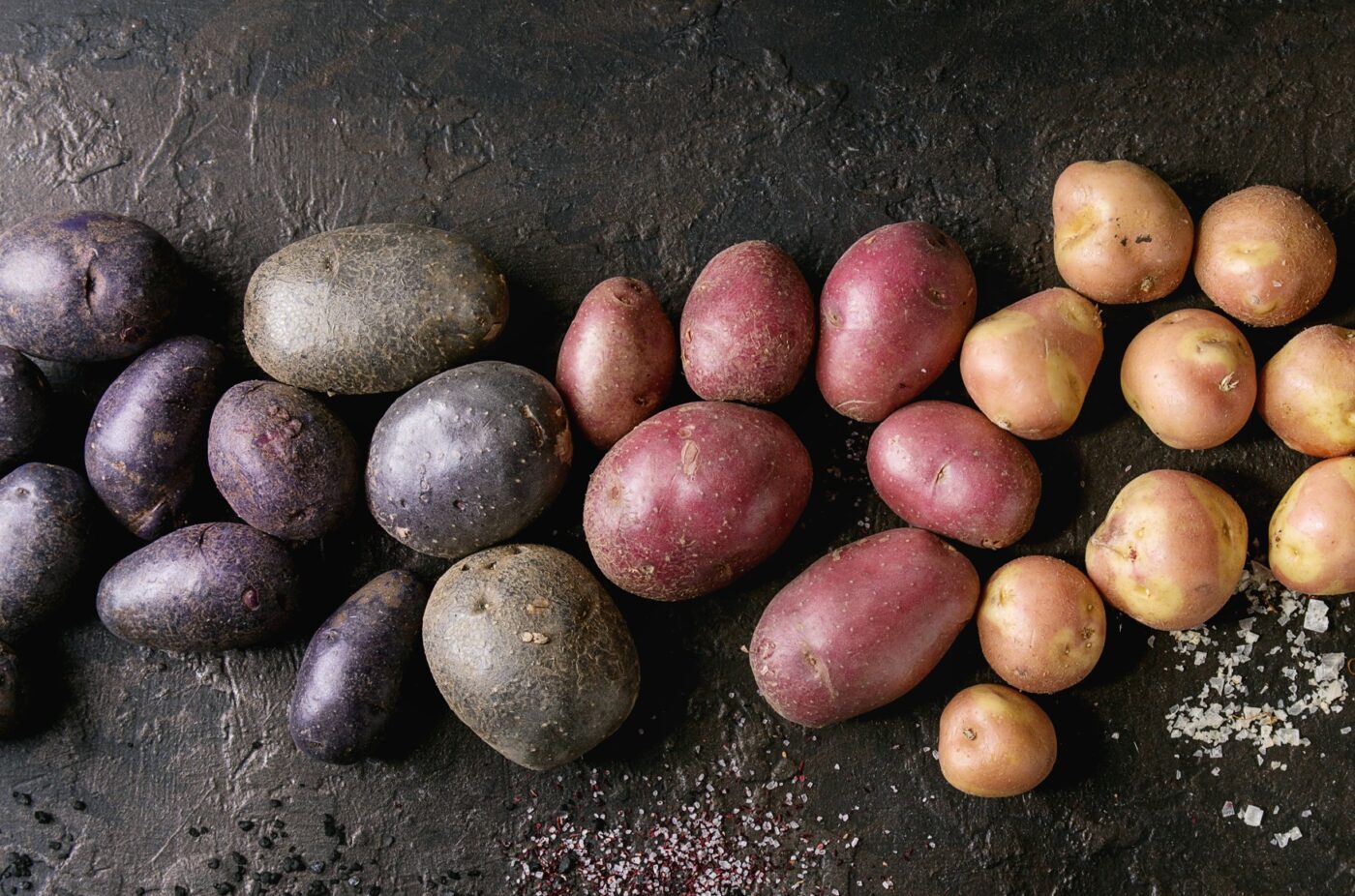Red Potatoes
- These vibrant beauties have a thin red skin and creamy white flesh.
- Their versatility makes them perfect for roasting, boiling, and starring in potato salads.
Read more here.
Waxy potatoes, unlike their starchy counterparts, hold a special place in the potato world. They are prized for their dense texture, high moisture content, and ability to retain their shape beautifully when cooked. This makes them ideal for a variety of dishes, from creamy potato salads to perfectly roasted gems. Let's delve into the colorful world of waxy potatoes, exploring the unique characteristics and culinary uses of red, white, yellow, purple, and fingerling varieties.
The term waxy potatoes refers to a potato’s textural properties, not a specific variety. These potatoes have a higher moisture content and lower starch content compared to their starchy counterparts. This key difference means that waxy potatoes hold their shape beautifully during cooking, resisting the tendency to fall apart. This characteristic makes them ideal for dishes where you want distinct pieces of potato, rather than a mashed or pureed consistency. They also possess a subtle, slightly sweet flavor that complements a wide variety of ingredients.
If your recipe doesn’t specify what kind of waxy potatoes to use, you can use any potatoes in this category.
Waxy potatoes boast several key advantages over their starchy cousins:
The world of waxy potatoes extends far beyond a single variety. Here’s a glimpse into some popular options:
Read more here.
Read more here.
Read more here.
Read more here.
The unique properties of waxy potatoes make them incredibly versatile in the kitchen. Here are some of their most popular culinary applications:
Potatoes, in their various forms, have been a dietary staple for millennia. The history of waxy potatoes, while not as specifically documented as some individual varieties, is intertwined with the broader history of potato cultivation. Originating in the Andes Mountains of South America, potatoes were domesticated thousands of years ago. Different varieties, including those with waxy characteristics, were developed through selective breeding by indigenous peoples. These potatoes were prized for their ability to thrive in diverse climates and their versatility in cooking. As potatoes spread across the globe, different cultures adapted them to their own culinary traditions, recognizing the unique benefits of waxy potatoes for specific dishes.
Waxy potatoes offer a range of nutritional benefits:

Let’s explore the culinary histories of some prominent waxy potato varieties:
Waxy potatoes, while sometimes overshadowed by their starchy cousins, play a vital role in culinary traditions around the world. Their ability to hold their shape, their subtly sweet or earthy flavors, and their vibrant colors make them indispensable for a wide range of dishes. From the classic potato salad featuring red potatoes to the elegant roasted fingerlings adorning a gourmet plate, waxy potatoes offer a unique textural and flavor experience. Understanding the characteristics and history of these varieties allows us to appreciate their versatility and to utilize them to their full potential in our own kitchens. They are a testament to the incredible diversity of the potato and its enduring contribution to global cuisine.
Before we dive into specific varieties, it’s crucial to understand the fundamental difference between waxy and starchy potatoes:
This difference in starch and moisture content significantly impacts their nutritional profiles and how they behave in cooking.
While there are variations between specific varieties, waxy potatoes generally share a similar nutritional foundation. Here’s a look at the typical nutrients found in 100g of cooked waxy potato (without skin, boiled):
Red potatoes are one of the most readily available waxy potatoes. Their nutritional profile closely aligns with the general waxy potato profile above. The red skin contains additional antioxidants, so leaving the skin on when cooking (after thorough washing) boosts the nutritional value.
White potatoes are another versatile waxy potato. Their nutritional profile is very similar to red potatoes. They are a good all-purpose potato, suitable for boiling, steaming, roasting, and salads.
Yellow potatoes, particularly the popular Yukon Gold variety, are prized for their naturally creamy texture and rich flavor.
Purple potatoes are a nutritional standout due to their high concentration of anthocyanins.
Fingerling potatoes are essentially miniature versions of other waxy potatoes. Their nutritional profile is similar to the corresponding larger variety (e.g., red fingerlings will have a similar profile to red potatoes). The primary difference is their size and shape, which makes them excellent for roasting and salads. Because of their small size and thin skin, they are often cooked with the skin on, which further boosts their nutritional value.
Waxy potatoes offer a delicious and nutritious addition to a balanced diet. They provide essential vitamins, minerals, and fiber, with variations in antioxidant content depending on the variety. Whether you choose classic red potatoes, versatile white potatoes, buttery yellow potatoes, antioxidant-rich purple potatoes, or convenient fingerling potatoes, you’re making a healthy and flavorful choice. Experiment with different varieties and cooking methods to discover your favorites and enjoy the diverse benefits these versatile tubers have to offer.
Waxy potatoes are a culinary gem, offering a unique texture and versatility that sets them apart. From classic potato salads to elegant gratins, these potatoes elevate dishes with their creamy consistency and ability to hold their shape. Understanding their characteristics and culinary applications can unlock a new level of cooking confidence and creativity.
Comments